Carly Findlay's Blog, page 23
March 31, 2021
New covers for Growing Up Disabled in Australia
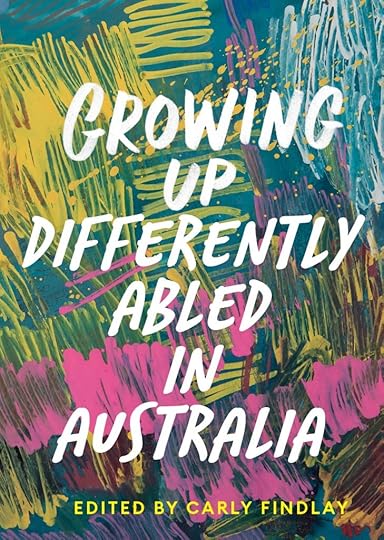
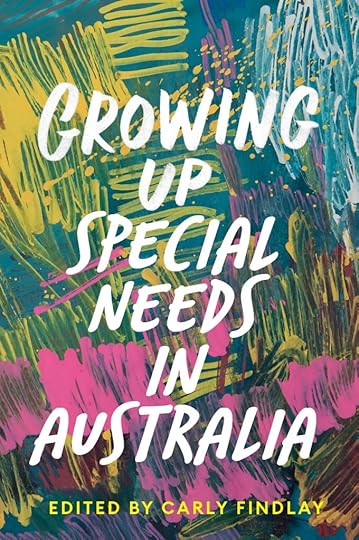
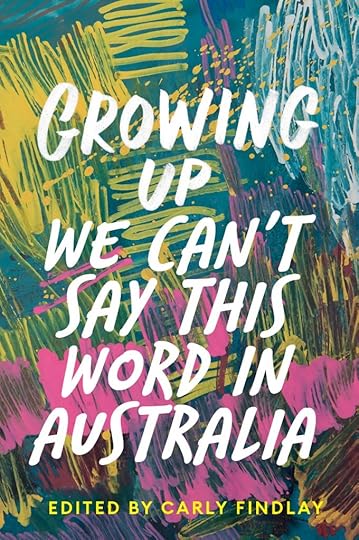
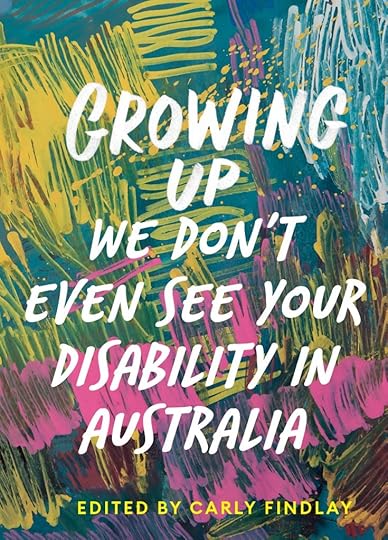
New cover release!
By popular demand, I’ve worked with Black Inc to develop some alternative covers for Growing Up Disabled in Australia.
These covers are aimed at the (mostly non disabled) people who just can’t bear to #SayTheWord “disabled”.These new covers will save non disabled from any potential embarrassment or confusion about not seeing disabled people as people when buying the book.
There’s been so much concern by non disabled people that the word “disabled” in the title will affect sales. I am totally sharing their concerns – going to reprint two weeks after release just didn’t exceed my expectations of the book’s reach.
There are so many of you worried about the words disability and disabled, and we just can’t afford to lose you as readers. So we’ve centred non disabled voices for you to feel more welcome in our disability community by softening the language we use about ourselves. Nothing about you, without you, right?
You can buy Growing Up Differently Abled in Australia and Growing Up Special Needs in Australia from Black Inc.
While we’re on the topic of alternate covers, I’m considering changing my first book release’s title to “Ask me inappropriate questions before saying hello”.
Feeling #Blessed that so many non disabled people have told me how uncomfortable my disabled identity makes you – this is my way of making you more included and more comfortable.
I am thrilled to be a good ally to non disabled people.
Images: four photos of a book. The first is called Growing Up Differently Abled in Australia. The second is called Growing Up Special Needs in Australia. The third is called Growing Up We Can’t Say This Word in Australia. The fourth is called We don’t even see your disability in Australia. The book cover is an abstract drawing featuring pink, yellow and purple coloured scribbles on a teal background. The title is is in white capital handwritten style text in the middle of the book, and “edited by Carly Findlay” is in yellow text at the bottom of the book.
March 29, 2021
Book review – Before I Saw You by Emily Houghton
CW: ableism, trauma, spoilers
I have a lot of thoughts about Before I Saw You – the 34th book I’ve read so far this year.
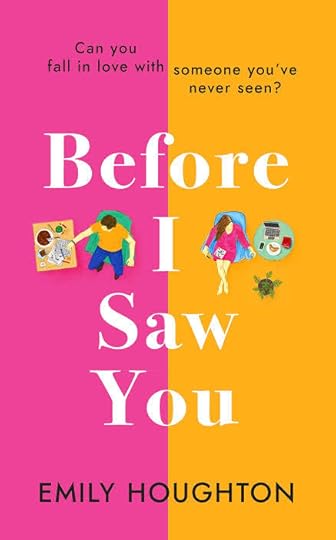 Image: a book cover – one half is orange and the other half is pink. On each side are drawings of two different people in their hospital beds. The book is called Before I Saw You by Emily Houghton.
Image: a book cover – one half is orange and the other half is pink. On each side are drawings of two different people in their hospital beds. The book is called Before I Saw You by Emily Houghton.Before I Saw You popped up on my Kindle recommendations – and honestly, I should have heeded the alarm bells of the snippets of previous reviews.
“A charming page-turner of a romance with characters I cared about enormously. I inhaled it! ― Laura Jane Williams, bestselling author of Our Stop
The perfect read for fans of Me Before You ― Candis
An emotional, character-led story ― My Weekly
A heartwarming and heartbreaking debut ― Heat”
This book is one I would tongue in cheek describe as “upliftspirational”.
Ableism is always charming and heartwarming.
The story is told from two perspectives – Alfie and Alice, two twenty something career minded people who come together through life changing events.
They are next to each other in hospital – after each having serious accidents that left them disabled.
Alfie is the only survivor of a car accident – that killed his two best mates. One leg is amputated and he’s learning to walk again.
Alice survives a late night office fire, saved by a hero receptionist. She endures burns to her face and body.
Over a course of time – it’s hard to tell how long, as the book is quite slow moving – they fall in love through conversation and hand holding, though they never see each other.
There is so much grief and shame in the book. So much.
Alfie is less shameful about his disability than Alice, but he’s still concerned about discrimination at his workplace – he’s a PE teacher. But Alice cannot shake the shame and self hatred – afraid to look in the mirror and for others to see her.
The language used perpetuated the tragedy narrative.
Words like “broken” and “freak” were constantly used by Alice, though the medical staff and peripheral characters also constantly validated what a tragedy Alice’s face was after the accident, too.
From the first chapter:
“‘Lucky? You think she’s going to feel lucky when she looks in the mirror for the first time? She’s been badly burnt, the poor girl.”
A few examples from Alice’s perspective near the end:
“He didn’t even have the decency to look her in the eye. Why was he talking to the goddam floor? Could he not stand to see the monster he’d failed to fix? ‘I’m so sorry. I’ll come back tomorrow to check on the wounds. In the meantime, is there anyone you’d like us to call?’ She shook her head. How could she tell them it hadn’t worked? How could she admit it had been a huge mistake? It had failed. Nothing had changed. She was still broken, and she needed to get used to the fact that now she always would be.”
and
“How would anyone be able to love someone so broken?”
and
“The morning after she’d got home from hospital, Alice had taken down every single mirror she owned. Even the thought of walking past one and catching her reflection worried her. Now she was about to see her face reflected back to her on the screen.”
and
”The scarring has gone down a little and it’s less red in places, but … I’m still a freak.’
There was so much more.
Both Alfie and Alice’s friends seem to accept their respective disabilities more than Alfie and Alice themselves – offering encouraging words. But other than this, and perhaps the ending, there was no positive representation of disability at all.
I have tried to find out if Emily Houghton, the author of Before I Saw You, has burns, a facial difference or amputation, but cannot find anything. I have googled and tweeted Emily Houghton. (The about section on her website says she wrote the book when her life changed forever.) I hope it’s #OwnVoices. (In the acknowledgments, Emily writes “Alfie and Alice are a reflection of so many parts of me” – so perhaps she has firsthand lived experience of disability and facial difference, but there’s nothing public to suggest she does.) It would give the book so much more credibility if she was disabled.
But also, what responsibility does an author have to their readers to disclose their disability or not? That’s a big question that I have not got an answer to. Disabled people need not disclose disability but I do think it helps give a sense of the person’s experience when making creative works like this book. I think readers deserve transparency around if there is an own voices author, or not.
And if it’s not own voices, what inspired Emily to write this book? Has she got a disabled relative or friend? Does she work in the disability sector – like hospital rehab? Or can she easily disguise her burn scars or amputation (if it is written from lived experience)? (The acknowledgements mention doctors, but no reference to actually disabled people who were consulted. Emily writes: “Dr Nagla Elfaki, Dr Tom Stonier and Dr Naomi Cairns, who were, despite saving lives and working unbelievably long hours, always on hand for medical fact-checking and advice! I do have to say that creative licence was still taken with the book, but without their knowledge and support the authenticity and understanding of the characters’ journeys would not have been the same.”) This is important in determining the author’s experience of disability and how she wants readers to feel about disability. And of course, as with a number of books I’ve read by disabled people (mostly memoirs), lived experience of disability doesn’t mean the writer won’t be ableist.
I resonated with the bonds formed with other patients – this is so important. Friendship between disabled people is integral to self actualisation and realisation of disability identity. There are some good lines about self acceptance and accessibility infrequently through the book, but it’s very much portraying disability as tragedy, grief of becoming disabled, the fear of seeing yourself (and others) now you have a facial difference. I liked the line about how even if you’re curious (about someone’s disability), it’s not ok if it causes hurt.
As someone born with a facial difference, the descriptions around the fear the main character Alice has about looking at herself and also letting others see her only increases the stigma around people like me. Living with a facial difference is hard. There have been days when I didn’t want to look at myself in the mirror, and the stares, laughs and discrimination I endure regularly is wearing. But I am proof that you can thrive, and be happy with your appearance if you have a facial difference. There really wasn’t any hope for Alice. She couldn’t even imagine that happening.
And the idea that you don’t need to see someone to fall in love is true (I did years of internet dating, and loved people I’d only talked to online/phone, and I was very self conscious about revealing my appearance to boys I was keen on) but also suggests disabled people are rarely loved for our appearances, that any “deformities” must be looked past. Above all, the idea that disabled people’s worth is measured by the love from someone else rather than self love is perpetuated frequently throughout the book.
I also recognise that the experience of acquired disability is different to mine. There is grief, and it’s valid. But I worry these tropes (like with Jo Jo Moyes’ Me Before You) suggest disabled is worse than death, and it might be a reader’s only experience with disability.
There was a little about the difficulty of navigating stares and pointing from children and adults; but no real resolution in how to handle these situations. I would love to have seen Alice especially find some role models in the facial difference community, perhaps some reference to Changing Faces – the British charity that does so much good work in educating people about facial differences. But there was no mention of either. Even consulting with the charity on language would have helped.
Alfie was fairly upbeat about his acquired disability – I like to think this rubbed off on Alice at the end of the book. There was a lot of talk from Alice about wanting her face to be “fixed”, against Alfie’s beliefs. Now it wasn’t up to him to have a say in what Alice does with her body, but at least one character had a perspective that Alice’s face was not something to be hidden away.
While there was a happy ending, it wasn’t enough to redeem itself from the shame and tragic narrative throughout.
There were good intentions with Before I Saw You. But there was so much ableism which left me frustrated. There were so many missed opportunities in this book – particularly to show disability isn’t a tragedy. Mostly, it left me sad that seemingly another book takes up space in writing Disability as a tragedy.
This book doesn’t make any room for us disabled people, and it reinforces stereotypes that our lives are terrible. Disabled people, people with facial differences, we deserve better representation in literature than this.
March 27, 2021
Eliza Hull – Don’t Look Away
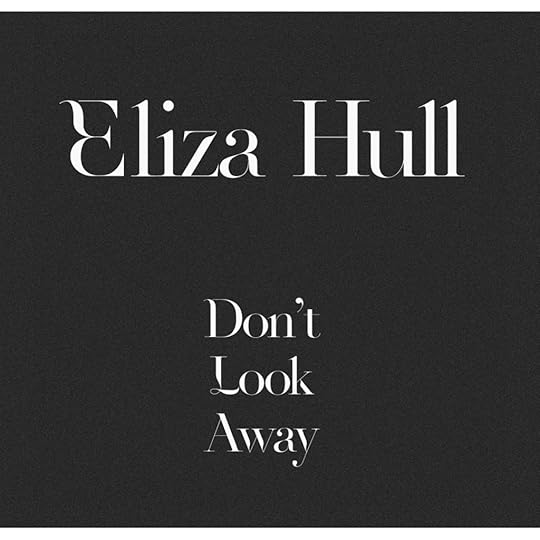
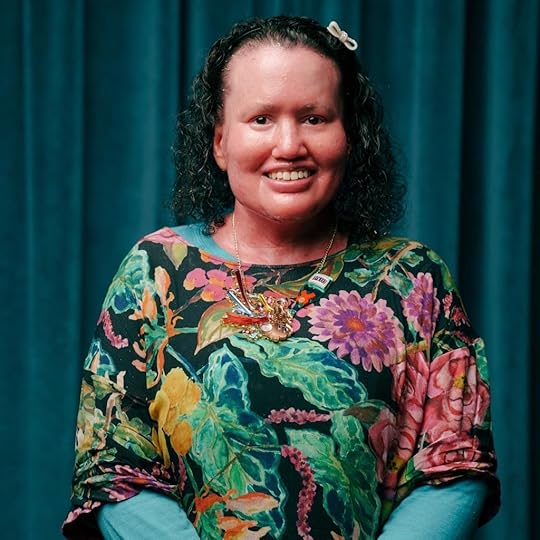
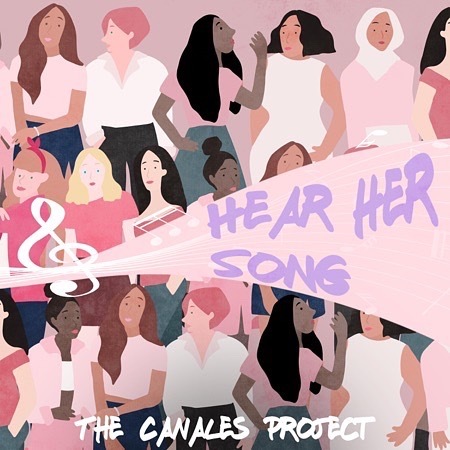
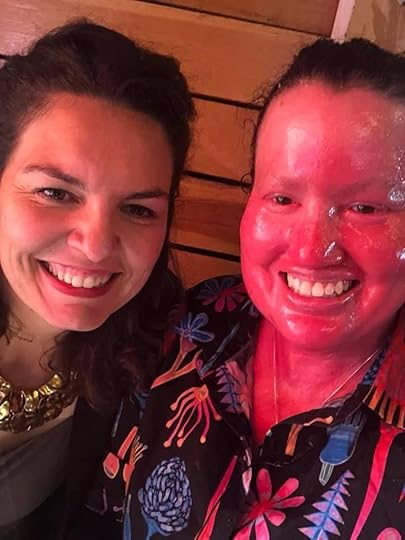
Wow! My dear friend and colleague Eliza Hull wrote a song about me for The Canales Project. It is perfect. I am honoured, and a bit lost for words. Thank you Eliza. Click here to buy the Hear Her Songs album.
Images: a collage of four photos. from top left:
ID 1- Black background with white text that says Eliza Hull Don’t look away
ID 2- Carly is smiling at the camera with a green background. She has a red face and dark brown shoulder length curly hair with a clip in it. She’s wearing a colourful dress.
ID 3- Hear her song is written in purple and the Canales project is written in white. Various illustrations of women.
4. A selfie of Eliza and Carly – two curly haired women, smiling widely.
March 26, 2021
Leaders are born – but we must dismantle barriers so disabled people can lead
This was my contribution to a debate at Castlemaine State Festival on Friday 26 March. The debate topic was “are leaders born, or are they taught?”, and it was between Sally Rugg, Gareth Evans and me (leaders are born) and Christine Nixon , Don Watson and Shelley Ware (leaders are taught). What a fantastic event, especially to be at an IRL festival again. Wow! The festival staff are amazing, so happy to be here.
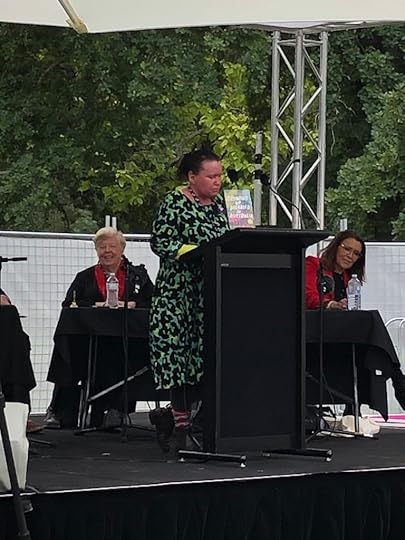 Image: a woman in her late 30s standing on stage, speaking at a lectern. She’s got a red face and short dark curly hair tied back, and is wearing a teal, black and neon yellow leopard print dress over a yellow top. A book – Growing Up Disabled in Australia – is resting against the microphone. Two women are behind her – an older white woman, and a middle aged Aboriginal woman. Photo by Northern Books..
Image: a woman in her late 30s standing on stage, speaking at a lectern. She’s got a red face and short dark curly hair tied back, and is wearing a teal, black and neon yellow leopard print dress over a yellow top. A book – Growing Up Disabled in Australia – is resting against the microphone. Two women are behind her – an older white woman, and a middle aged Aboriginal woman. Photo by Northern Books.. I pay my respect to the Dja Dja Wurrung people, the traditional owners of this land. They’ve been telling stories on this land for over 60,000 years – it’s a privilege to be guests on this land.
We are often thrust into leadership positions because we are advocates for change. As Sally Rugg said, “minoritised people are forced to leadership at an early age as they advocate for themselves, their families, their rights, their dignity, etc.” And to quote Gareth Evans, and also Lady Gaga, great leaders are “born that way”.
I identify as a disabled woman, and my experiences are shaped by being disabled and the discrimination faced, and also inclusion. I became to identify as disabled when I met young disabled and chronically ill leaders in my mid 20s. Many of these people were younger than me, but they taught me so much – mostly about disability identity and pride, and how to advocate for access.
I absolutely agree that leadership is inherent to who we are. But I’m going to add something more to that – that while we are born leaders, we can only live out our potential to lead when physical, attitudinal and structural barriers are removed.
In 2020, the Australian Institute of Health and Welfare reported:
“* Fifty three percent of Working age disabled people participate in the Australian workforce, compared to eighty four percent of non disabled people.
*People with disability are more likely than people without disability to leave school early and to have a lower level of education
“ * People with disability generally have a lower level of personal income than people without disability.”
And, 12 percent of students with a disability go to a special – note – segregated school where they don’t receive a mainstream education.
Greens Senator Jordon Steele John is a contributor to my new book, Growing Up Disabled in Australia. In his chapter, which came about through an interview he did with emeritus professor Chilla Bulbeck. He talked about Parliament House, a house where we should all be welcome, a workplace to aspire to – though perhaps not for women, and not this week – is not accessible.
Jordon said:
“…the inference was that disabled people are something to be charitably given a bit of space if we feel like it, but not centrally included in the planning of a space. I encountered a similar attitude when I entered parliament. This is a building that was built in 1988 and at the time they were patting themselves on the back for the number of accessible toilets they put in the public areas. But not a single piece of the working areas of Parliament House was built to be accessible, even by 1988 standards. When a man who used a wheelchair, Graham Edwards, was elected to the House of Representatives, they changed an office for him but nobody thought to change anything on the senate side of the building. Because again the thinking was, ‘Oh, that’s an anomaly, it will never happen again.’ And the reaction to me entering Parliament House was, ‘Oh crap, we haven’t got an accessible office.’ So far they’ve fixed things to the bare minimum for me. And I’ve been saying that it’s not good enough, that you need a comprehensive accessibility plan for the building. How are you going to transform the way it works so that you are prepared for other disabled people to be elected? And I’m just met with blank stares.
And this led back to the social model of disability, and the understanding that disability is not something the individual has and which is therefore their responsibility, but instead is created through the interaction of their impairment or difference with barriers created and sustained in society by ableism, by presumptions. Addressing the discrimination that disabled people face is a whole of society issue – everybody has a responsibility for breaking down and changing it.”
As an arts worker, public speaker, festival regular, I look at stages. A stage – what we are on now. It’s very rare that I see a stage that is accessible to disabled people – that is, a wheelchair lift, seats, space for an Auslan interpreter, adjustable lighting. This stage is accessible, and I am impressed.
Rarer still that there’s an accessible backstage area for disabled people – no accessible toilet and shower, no space for rest, and the accessible entrance is probably near the rubbish bins.
I am a guest lecturer at a university. I teach young medical students about media representation of genetics. My lectures are once a year, for an hour. One day I arrived at the University, and there was not a seat at the lectern. It would be painful for me to stand for an hour. So I asked the student leader in the lecture theatre for a seat. He had no idea where to find one, but I had seen one on the way in. We walked through the maze of the University building, and I spotted the stool. It had a sign on it, and lots of masking tape affixing the sign between the stool’s legs. “There is is”, I said. “Oh no, you can’t use that?”, he replied. I asked him why? “The sign says it’s for mobility impaired academics only”, he said. “I am one”: I confirmed. It was very awkward after that.
His view of disability was so narrow – he had the idea that I didn’t need a seat as I can walk. This exchange also showed me that he didn’t expect a disabled person to lead.
I want to see more spaces built – and modified – so that disabled people can lead, across all industries. So that we can just get on with our jobs without begging for access and being met with blank stares as Jordon speaks of, or defensiveness as we so often encounter.
I see so many amazing disabled people who are leaders – Nas Campanella, working as a news reader on Triple J to now being the ABC’s National Disability Affairs Repoeter; Connor McLeod, who in 2015 when he was 13, petitioned the Royal Bank of Australia to add a Braille label to notes so he and other blind people could tell how much they’re worth; and Nat Wade, a south Australian lawyer, who founded a disability led law firm, specialising in disability rights and justice. These are three among countless others. These are leaders who have, no doubt, experienced discrimination, but have also been supported to lead.
Something that makes me cringe is when we’ll meaning people congratulate me on my work and tell me I’m a voice for the voiceless. This is not true. Just because a disabled person doesn’t speak, or write, or hear, doesn’t mean they’ve not got something to say. It means that people aren’t making it accessible for them to communicate and be heard. How many disabled leaders have been overlooked because they don’t communicate the same way other leaders do?
There’s a famous saying in the disability rights movement, “nothing about us without us”, meaning that disabled people should be involved in all decisions for disabled people. Because we are born leaders, and disabled people make up 17.2 percent of the Australian population, we ought to be seeing a lot more disabled people in leadership positions, particularly related to disability. So, non disabled leaders, step aside and let us lead.
Did this post help you? Did it make your think or will you use it in your work? Please consider buying me a drink! Thanks!
(Jordon was quoted with permission.)
March 18, 2021
To Find Happiness by Josh Pyke
Hooray! Josh Pyke’s new song ‘To Find Happiness’ is out today! Such a beautiful song, especially as we emerge into the world again.
Josh asked me (and many others) to put the song to a little video, to celebrate its release. I’ve had the song for a couple of weeks and have listened to it on repeat.
I went to Princes Pier two Sundays ago, the light was perfect, and the company too. I knew I wanted to capture my experience there to pair with this song. I found happiness while skating around – which Myekie captured on my phone (thanks!). Rollerskating brings me a lot of joy! (And Josh also said this could be an alternate video clip!)
 Image: Josh Pyke’s to Find Happiness cover – a teal square with a man who has a pink cat’s head on him. A guitar is strapped to his body, and he’s making the peace sign with his hands – two fingers in a V shape palms face forward.
Image: Josh Pyke’s to Find Happiness cover – a teal square with a man who has a pink cat’s head on him. A guitar is strapped to his body, and he’s making the peace sign with his hands – two fingers in a V shape palms face forward. #ToFindHappiness is on Spotify now. Check out Josh’s website for more places to purchase it.



Video: a woman with a red face, wearing a navy sea shell print dress, green skates, pink protective pads and a purple helmet. She’s skating around a large concrete space, smiling, laughing, talking. The view behind her changes as the video moves – a large light green pier building, and the sea and sunset. Skaters are whizzing by, some are standing, some are sitting putting on their skates. Music plays in the video. It’s a song sung by a man, featuring an acoustic guitar.



Music is ‘To Find Happiness’ by Josh Pyke.
Lyrics are: “To find happiness
You must always seek the warmth
In every sun.
To Find your love again
You must believe that
There’s a heart
For everyone
And if you’re sad today
Well that’s ok
Tomorrow lift your chin again
Our lives are like a child
Not ours to own
Just ours to
Give away
There’s meaning all around
The gift of autumn air
The summer sounds
A hand to hold
A fist too strong
To linger in
The sad songs”
I have permission from Josh Pyke to share this song.
March 17, 2021
On anger
There is a high cost to disabled people for speaking out about ableism. I call it secondary ableism.
That is, when a disabled person publicly (or privately) talks about ableism we face, some of the responses are ableist.
“Maybe you’re overreacting.”
“Maybe they were having a bad day.”
“There are two sides to every story.”
“Well of course they were afraid of you, it’s not often they’d encounter someone like you.”
I’ve heard it all. As have many other disabled people.
It. Is. Exhausting.
There are things that I don’t talk about publicly because I cannot deal with the fallout on social media. This is what I’ve learnt.
The discriminatory event, the administrative follow up of making complaints; and then, the devil’s advocates who come out if it makes the media. It can be so lonely.
A few years ago I went overseas. It took a lot to organise my ointments in my luggage, and the bulkhead seat – with all airlines. It was hard to contact some of the airlines, and also prove medical needs, despite letters from doctors and pharmacists.
When I was in New Orleans the airline staff doubted my doctor’s letter was real, and assumed the pharmacy stickers on my ointment were doctored. I had to argue to get them in stowed luggage. (It’s been so long since I’ve traveled that I wrote stowed, not stowaway – which I’d love to do!) Words were exchanged, it was heated and frightening.
And then in London, the bulkhead seat request didn’t go through, despite contacting the airline several times prior. I was exhausted, showing them proof of my contact. Again, heated words were exchanged. I landed back in Melbourne and saw that someone had created a Facebook account in my name; telling me they’d checked me in at Heathrow and I was “stroppy bollocks”. I called the airline to complain and they suggested that staff member had been hacked.
I have been in similar situations – with taxi drivers refusing to drive me as “my face will ruin their cab”; a shop assistant asking me to leave their store; a nail technician refusing to do my nails as I “might be contagious”; and a house cleaner getting a shock at my appearance and running away.
I have gotten upset, yelled and sworn at them. Not my proudest moments but I am not apologising. The rage is real.
I often expect and prepare for the worst, because the worst often happens. The work it takes to ask for access needs to be met, and then the cumulative impact of trauma and discrimination means that disabled people have every right to be angry. Often when I’ve complained, a non disabled person often told me it’s not discrimination.
I aim to be polite in most situations. But I cannot guarantee I will be polite when I’m discriminated against yet again. I go into fight or flight mode. Upset, shouting, swearing.
Non disabled people are not used to seeing angry disabled people. We are supposed to be passive, quiet, polite.
And then there’s the “you better not behave badly in case someone’s only experience with a disabled person is an angry one” 
We are conditioned to educate about our disabilities at all times, and not to make a fuss. We are expected to perform inspiration on command, and be grateful for the times we don’t experience discrimination.
Disability discrimination happens – intended or not. You might not believe it because you can’t imagine anyone ever treating a disabled person less than respectfully. And so when it does happen, believe us.
Let us be angry, and understand why we are angry.
Realise that this probably isn’t the first time we’ve encountered discrimination; and that we are attuned to spotting it – even when it’s a micro-aggression.
Help us share the burden by speaking up and making complaints with us.
Instead of telling us on social media that you saw us get angry at the discrimination we endured, ask us how can you help us in the moment. Stop being a bystander.
That is good allyship.
Disabled people are angry, and we have every right to be.
Has this post helped you think about disability differently? Will you use it in your workplace or school? Please consider buying me a drink!
March 15, 2021
March 4 Justice – don’t forget disabled women
CW: abuse, violence, discrimination towards disabled women
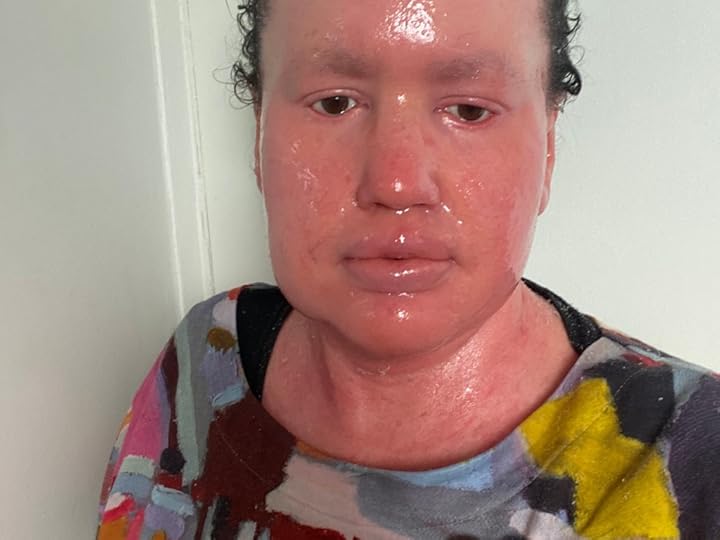 Image: a woman with a red face and dark curly hair tied back, wearing a colourful dress. On her dress is a brooch – two children wearing bright coats and holding a kite. Below is a scroll that says “Votes for women.” She is not smiling as she’s fed up.
Image: a woman with a red face and dark curly hair tied back, wearing a colourful dress. On her dress is a brooch – two children wearing bright coats and holding a kite. Below is a scroll that says “Votes for women.” She is not smiling as she’s fed up.As you matched for justice today, I hope you didn’t forget disabled women, especially disabled women from First Nations and culturally and linguistically diverse communities; intellectually disabled women and transgender women.
1800 Respect states:
“Compared to women without disability, women with disability:
* Are at greater risk of severe forms of intimate partner violence
* Experience violence at significantly higher rates, more frequently, for longer, in more ways, and by more perpetrators
* Have considerably fewer pathways to safety
* Are less likely to report experiences of violence”.
(https://www.1800respect.org.au/inclus...)
And
In 2020, the Australian Institute of Health and Welfare reported:
* Fifty three percent of Working age disabled people participate in the Australian workforce, compared to eighty four percent of non disabled people.
*People with disability are more likely than people without disability to leave school early and to have a lower level of education
“ * People with disability generally have a lower level of personal income than people without disability.”
(https://www.aihw.gov.au/getmedia/7005...)
The statistics are shocking. But they’re rarely addressed.
Don’t forget disabled women who are denied an education; and who are afraid to disclose their disability at work for fear of losing their jobs.
The disabled women whose medical conditions are not taken seriously by doctors.
The disabled women who are forcefully sterilised or who are dissuaded from having children.
The disabled women who report violence and discrimination, only to be disbelieved – deemed unreliable witnesses.
The disabled women who can’t access safety.
The disabled women who cannot speak up.
The disabled women raped and killed by partners, parents, support workers, strangers & institutions.
The secondary ableism and gaslighting we face when we speak out about discrimination. “It didn’t happen like that, maybe you’re over reacting, you’re lying”, they say.
The expectation that we shouldn’t be angry when discrimination happens, and for us to be polite at all times.
The lateral violence we face from other disabled people when we do advocacy differently.
The disabled women who are not paid fairly – if at all – for their work.
The disabled women who do not have access to healthcare because the buildings aren’t accessible and the communication isn’t accessible.
The disabled women who do work around access and inclusion only to be asked to continually do more work.
The disabled girls women who aren’t taught about sexual health, sexual pleasure and consent because expectations of disabled women are too low.
The disabled women who are not represented in media and literature.
Don’t forget us.
March 14, 2021
Discrimination on Victoria’s public transport system
This is Renay – @fn_feminist on Instagram. She came into Melbourne Friday, from country Vic, to treat her child. They stayed in a hotel, did fun stuff in the city, had dinner with me.
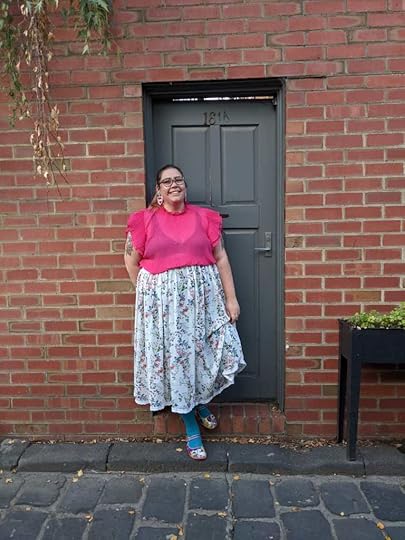 Image A smiling Indigenous woman wearing a bright pink sheer top with shoulder ruffles, a floral skirt and teal tights. She is leaning against a doorway, with a red brick wall is either side of the sage green door, and a table like plant stand is on the right.
Image A smiling Indigenous woman wearing a bright pink sheer top with shoulder ruffles, a floral skirt and teal tights. She is leaning against a doorway, with a red brick wall is either side of the sage green door, and a table like plant stand is on the right.Renay is a wheelchair user. She got to the station with an hour to spare on Friday afternoon. As the V-Line train was about to depart, the driver would not put the ramp down for her. The train departed without them. The next train was in 20 minutes but not wheelchair accessible. They had to wait 45 minutes for another accessible train.
Renay was apologetic and flustered when she arrived at the restaurant. I told her not to apologise.
She said to me that life is so hard. She wishes she could just get on with her day, without interruptions and discrimination.
On Saturday when leaving Melbourne, a Metro Trains driver refused to put the ramp down. She asked another Metro train driver to put the ramp down for her, and he said only if she says please. She doesn’t have to say please to get on the train – especially when she’s already been discriminated against.
She also told me that the NDIS was supposed to approve a new wheelchair which would enable her to get on the train without assistance. That was due last November, it hasn’t happened yet.
My heart broke for her.
Her children should not have to see her encountering discrimination and being so upset.
This is every day ableism. Micro aggressions and discrimination that mounts up to make you weary and make you question if it’s really that big a deal.
But it is a big deal. Discrimination like this ruins days. Disabled people are entitled to travel safely, punctually, and without discriminatory barriers.
Just make a complaint, people say. Complaints are arduous when discrimination happens so often. The forms are prohibitive.
Just get it right, I say. Make public transport physically accessible, and ensure all staff have adequate disability and accessibility training.
Because encountering discriminatory barriers on public transport barriers confirms the low expectations that disabled people have nowhere to be.
Disabled people have a shitload of resilience.It’s the gearing yourself up, anticipating that you will encounter discrimination; and then encountering discrimination that sets you in fight or flight mode – leaving you defeated and angry and tired for days. And I can completely empathise with the toll this discrimination takes. Every disabled person can.
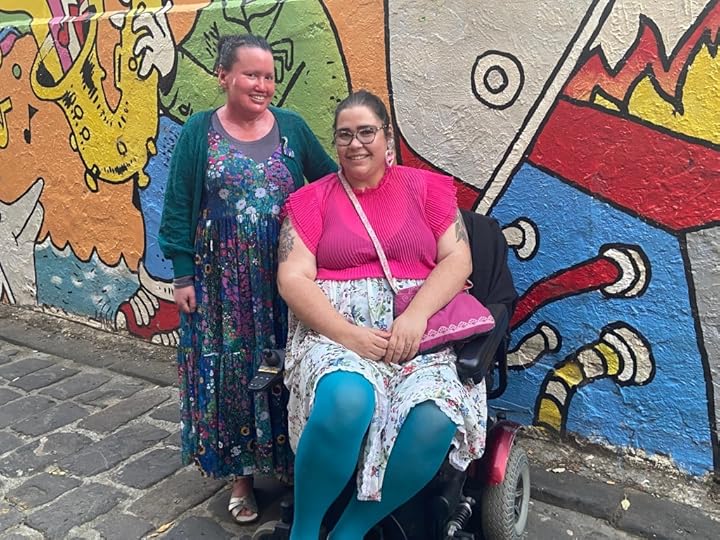 Image: two women, standing and sitting in a laneway. On the left is a woman with a red face and dark curly hair, wearing a colourful dress. On the right is a woman in a wheelchair, the same one as in the first photo. The wall is painted with a bright cartoon mural. This time, the woman with the red face is standing and the Indigenous woman is sitting in an electric wheelchair. They’re smiling. The laneway has cobblestones.[image error]
Image: two women, standing and sitting in a laneway. On the left is a woman with a red face and dark curly hair, wearing a colourful dress. On the right is a woman in a wheelchair, the same one as in the first photo. The wall is painted with a bright cartoon mural. This time, the woman with the red face is standing and the Indigenous woman is sitting in an electric wheelchair. They’re smiling. The laneway has cobblestones.[image error]How can you help?
– Write letters of complaint to Metro Trains and V-Line and Public Transport Victoria, sharing this post with them, demanding change for all disabled travelers. Here’s some detailed information about the PTV complaints handling process.
– Write to Victoria’s acting Premier James Merlino
– Write to Ben Carroll MP – Victoria’s transport minister.
In your complaints letters, state what happened – you can link to this post; the dates it happened (12 and 13 March 2021); the stations (Ballarat and Flinders Street); how you felt when you read about Renay; and what you want to see change.
– Write to the NDIS to complain about the delay in Renay’s new wheelchair.
– Share this post to show people what every day ableism looks and feels like.
– Go show Renay some love – her Instagram is @FN_Feminist.
Here’s Renay in her own words – on Friday and Saturday.
View this post on InstagramA post shared by Nay (@fn_feminist)
View this post on InstagramA post shared by Nay (@fn_feminist)
March 8, 2021
8 March 2020 – looking back one year on
Looking back on 8 March 2020.
I’ve felt a deep sense of longing in the lead up to today – as I reflect back on 8 March 2020 being the last “normal” day I had before Covid-19 changed everything.
It was All About Women at the Sydney Opera House. The atmosphere was electric – we were excited to hear the women we admire speak, and also to meet up with friends and colleagues. We trusted strangers to take our photos. We mingled closely. We hugged old friends and new. We ate together.
There was talk of cancellations overseas because of Covid, but I thought, that would never happen here? Would it?
The Ruby Princess was docked near the Opera House. There were so many people passing through. I had worn a mask on the plane, and wasn’t shaking hands, it’d be ok.
People were stocking up on toilet paper and were were laughing at what an overreaction this was.
It was the last day I travelled. The last big festival event I would speak at. The last gatherings with friends for a while. The last time I’d see my Mum until November.
I love my work, I love travel and I love meeting people. I never took it for granted. But I didn’t realise how much work shaped me and gave me a sense of purpose until it was gone – and we had to do things differently. I yearned and ached for what we once had.
That day was so glorious. I met and worked with amazing people. I had laughs and drinks with friends. I’ve tried not to think about how good it was in case it wouldn’t happen ever again.
And I acknowledge that so many others had it so much worse than I did. I was fortunate to have constant work from home, not on the front line, and was safe.
But we are climbing out of darkness, here in Australia at least. Festivals and events are happening again. Thank you to our government and health workers and our communities for keeping us safe. My thoughts are with those overseas who aren’t so lucky, and to those who have lost loved ones, work, financial stability, and their hope due to this insidious virus.
I am due to fly interstate next week. I won’t believe it until we are in the air.
What a year.
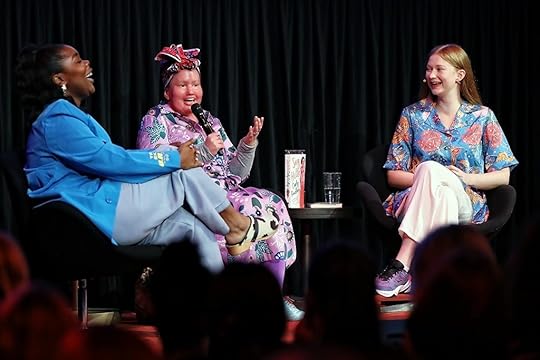
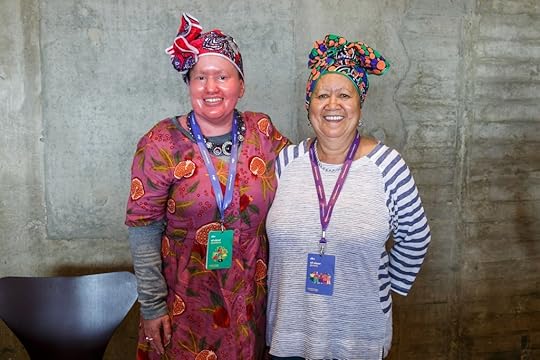
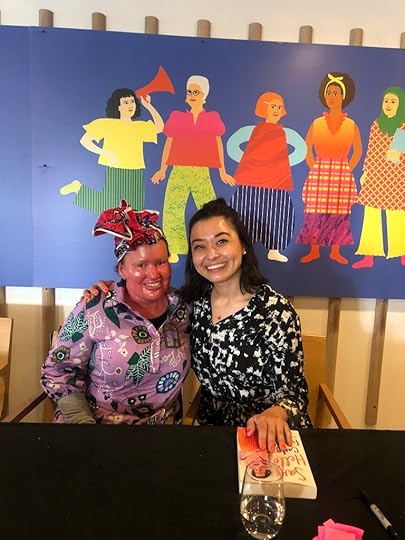
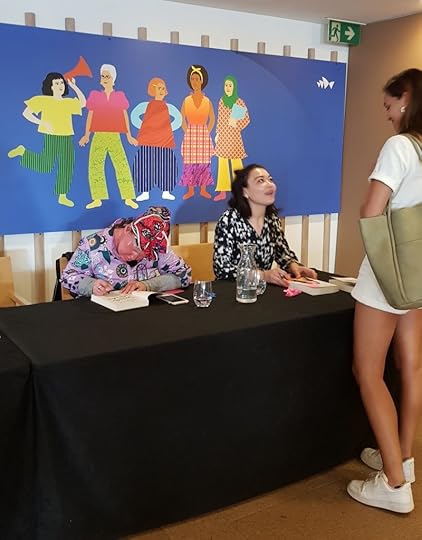
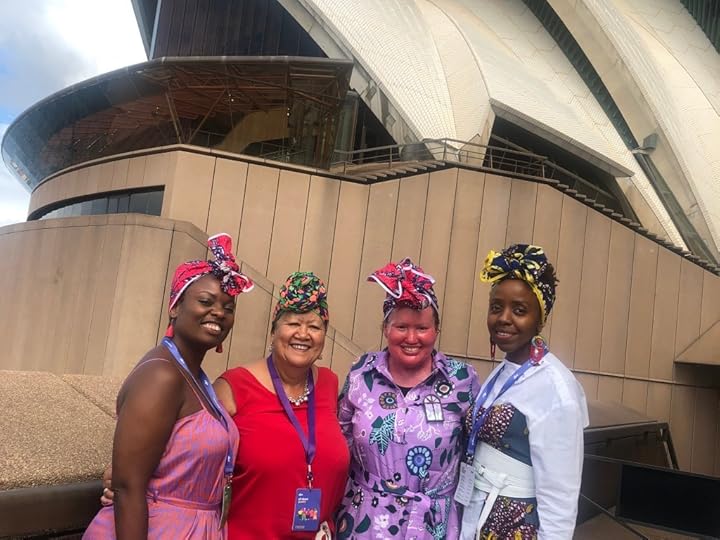
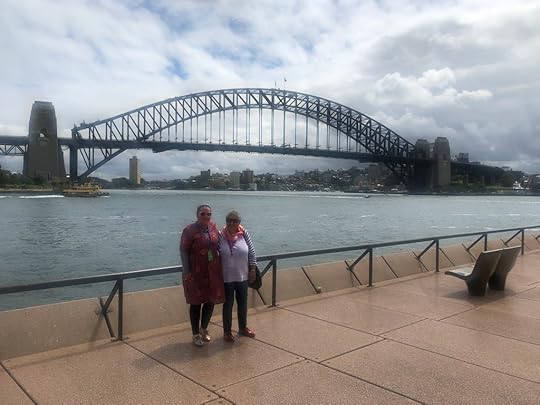
Images: 1. Flex Mami, Bri Lee and I, laughing on strange.
2. Mum and I in African head wraps after the 2 Sydney Stylists workshop.
3. Chanel Miller and I at the signing table. I am so glad we got to meet 
4. Me signing a book, and Chanel talking to a fan.
5. Mum, me, Niwa and Wa-Nyika from 2 Sydney Stylists the at Opera House.
6. A photo a stranger took – mum and I under the Harbour Bridge.
March 7, 2021
International Women’s Day 2021
 Image: a Black square with gold writing that says “If your “intersectionality” forgets disabled people, I don’t want it.” – Imani Barbarin
Image: a Black square with gold writing that says “If your “intersectionality” forgets disabled people, I don’t want it.” – Imani Barbarin
Today is International Women’s Day.
The theme is #ChooseToChallenge.
When you attend (or organise) a Women’s Day event (and any event around the year), I want you to ask yourself three questions:
Who is in the room?
Who can’t get in the room?
How will you invite them into the room?
I’ve been invited to do a few #IWD2021 events this month, but as usual I’m noticing the absence of disabled women from International Women’s Day events and media. Feminism constantly forgets disability.
I challenge you to actively create space for disabled women.
Create physical, online and financial accessibility. Hold your events in accessible venues – from board meetings to birthday parties; caption your videos and do image descriptions on your social media posts; include some lower priced or free options for your events; hold events at times outside of breakfast meetings (and record them so they’re available on demand).
Make sure disabled people and accessibility is always included and planned for.
Diversify your social media feeds – don’t just follow women who look and think like you, or have the same experiences as you.
Ensure you’re hearing not just from white disabled people – that you’re including, hearing from and amplifying Aboriginal and culturally and linguistically diverse disabled people, gender diverse disabled people, queer disabled people, intellectually disabled people, disabled people who communicate differently (like through Auslan and assisted communication devices).
Fill your bookshop with books by #OwnVoices authors – that is, books written about diverse topics by writers from those diverse communities.
Engage meaningfully with disabled people – that means asking us to collaborate, providing accessibility even before we ask for it, connecting with disabled people online in IRL, paying us for our lived experience.
Pass the mic to disabled people – enabling us to become leaders through mentoring, training and payment.
If this post has helped you or will use it in your workplace, please consider buying me a drink.



